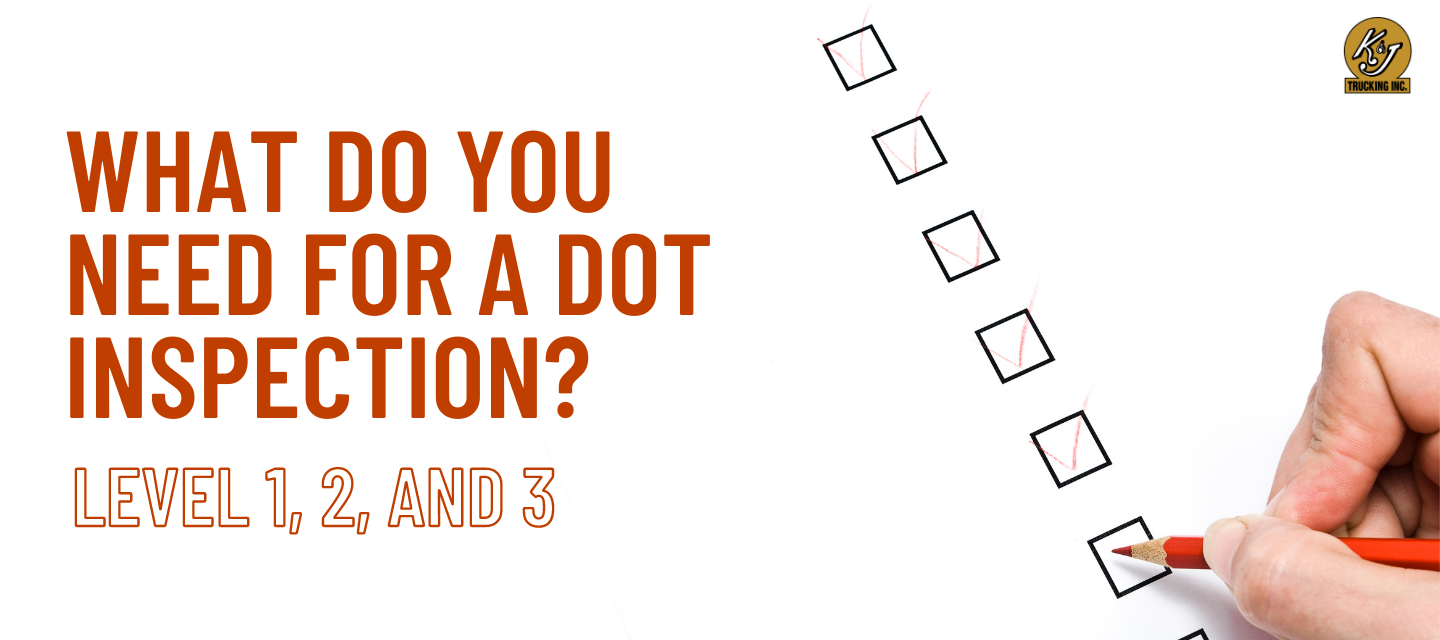What Do You Need for a DOT Inspection: Level 1, 2, and 3?

Whether you are a seasoned driver or a newbie to the business, inspections can still throw you for a loop. Be prepared by checking out this list of what to expect from each stage of inspection. Remember, a Level 3 DOT inspection is the most basic and a Level 1 DOT inspection is the most involved.
Level 3
A Level Three inspection is the most basic inspection and it is a paperwork-only inspection that does not involve the vehicle.
Make sure you have the following on hand.
-
Logbook (also called Record of Duty Status or RODs, for K & J drivers this will be an ELD, unless there are issues in which case you would use a paper log)
-
Driver’s license
-
Medical card (while these are going paperless, for now you should still have a copy with you)
-
Medical waiver (if applicable)
-
Vehicle Inspection Report (These are contained in your daily log as long as you are performing regular inspections)
-
8 Days of Blank Paper Logs
-
ELD Manual
-
Insurance card
If applicable, you should have:
-
Skill Performance Evaluation (SPE) certificate (if applicable, this proves drivers with impaired/missing limbs are cleared to drive)
-
HAZMAT requirements (if applicable)
-
HM/DG requirements (if applicable)
They will also be checking for the following:
-
Seat belt use
-
Possible drug or alcohol use
Level II
A Level II Inspection involves physical observation of the truck while walking around the vehicle. It does not involve getting under the trailer. A Level II inspection will require everything needed for a Level III plus an inspection of the following items.
-
Some components of the coupling devices
-
Exhaust system
-
Some components of the truck frame
-
Fuel system
-
Turn signals
-
Brake lamps
-
Tail lamps
-
Head lamps
-
Lamps on projecting loads (if applicable)
-
Safe loading
-
Steering mechanism
-
Suspension
-
Tires
-
Van and open-top trailer bodies
-
Wheels and rims
-
Windshield wipers
-
Annual DOT inspection sticker/report for your tractor and trailer
-
Hazardous materials (HM) placards (if applicable)
Level I
Have everything you would have on hand for a Level Two or Three inspection and be prepared for a physical observation of the following:
-
Brake system
-
Any other observable components while the officer is either on the creeper or in the pit (Suspension, brakes, coupling, exhaust, steering, wheel issues and more)
We hope this list helps you ace your next DOT Roadside Inspection. If you have questions about how inspectors select who to inspect, check out our explainer article on roadside inspections.
Are you looking for a company that values safety and compliance giving you more time on the road and less time worried about inspections and vehicle maintenance? Click below. We would love to talk and see if K & J could be a good fit for you, your family, and your goals.

